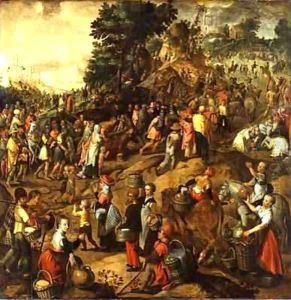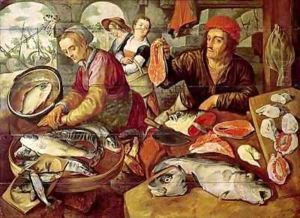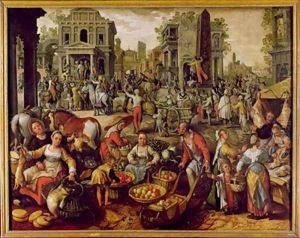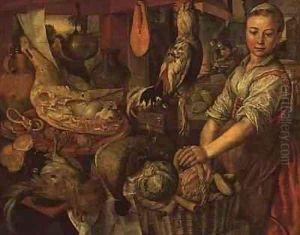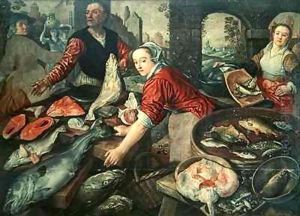Joachim Bueckelaer Paintings
Joachim Bueckelaer was a Flemish painter active during the Renaissance period, renowned for his detailed still lifes and market scenes that often incorporated elements of everyday life in the 16th century. Born in Antwerp in 1533, Bueckelaer was part of a family of artists; his uncle, Pieter Aertsen, was a significant influence on his work and is believed to have been his teacher.
Bueckelaer's work is characterized by its vivid depiction of food markets, kitchens, and domestic scenes, which not only highlight his skill in rendering textures and colors but also provide insight into the social and cultural aspects of his time. His paintings often include religious or moral themes subtly woven into the scenes of daily life, a technique likely borrowed from his uncle's approach to art.
Although there is not a vast amount of information on Bueckelaer's life, his surviving works suggest that he was a keen observer of the bustling urban life in Antwerp, which was one of the economic and cultural hubs of Northern Europe during the period. Bueckelaer's works were influential in the development of still life and genre painting in the Netherlands and beyond.
Joachim Bueckelaer's exact date of death is not well-documented, but it is generally accepted that he died in 1574. Despite his relatively short life, his work had a lasting impact on the genre of still life and serves as an important record of the cultural and culinary practices of his time.
